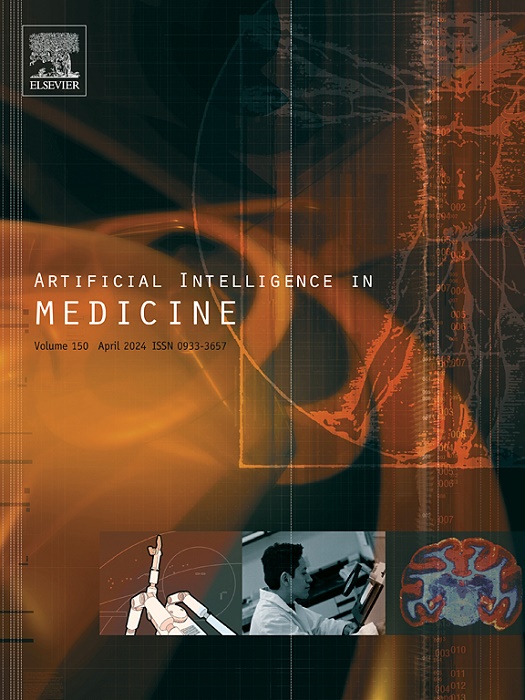Reconstruction-based approach for chest X-ray image segmentation and enhanced multi-label chest disease classification
IF 6.2
2区 医学
Q1 COMPUTER SCIENCE, ARTIFICIAL INTELLIGENCE
引用次数: 0
Abstract
U-Net is a commonly used model for medical image segmentation. However, when applied to chest X-ray images that show pathologies, it often fails to include these critical pathological areas in the generated masks. To address this limitation, in our study, we tackled the challenge of precise segmentation and mask generation by developing a novel approach, using CycleGAN, that encompasses the areas affected by pathologies within the region of interest, allowing the extraction of relevant radiomic features linked to pathologies. Furthermore, we adopted a feature selection approach to focus the analysis on the most significant features. The results of our proposed pipeline are promising, with an average accuracy of 92.05% and an average AUC of 89.48% for the multi-label classification of effusion and infiltration acquired from the ChestX-ray14 dataset, using the XGBoost model. Furthermore, applying our methodology to the classification of the 14 diseases in the ChestX-ray14 dataset resulted in an average AUC of 83.12%, outperforming previous studies. This research highlights the importance of effective pathological mask generation and features selection for accurate classification of chest diseases. The promising results of our approach underscore its potential for broader applications in the classification of chest diseases.
基于重建的胸部x线图像分割方法及增强的多标签胸部疾病分类
U-Net是一种常用的医学图像分割模型。然而,当应用于显示病理的胸部x线图像时,它通常无法在生成的掩模中包括这些关键的病理区域。为了解决这一限制,在我们的研究中,我们通过开发一种使用CycleGAN的新方法来解决精确分割和掩膜生成的挑战,该方法涵盖了感兴趣区域内受病理影响的区域,允许提取与病理相关的放射学特征。此外,我们采用了特征选择方法,将分析重点放在最重要的特征上。我们提出的管道结果是有希望的,使用XGBoost模型,从ChestX-ray14数据集获得的积液和浸润的多标签分类平均准确率为92.05%,平均AUC为89.48%。此外,将我们的方法应用于chex -ray14数据集中的14种疾病的分类,平均AUC为83.12%,优于以往的研究。本研究强调了有效的病理面具生成和特征选择对胸部疾病准确分类的重要性。我们的方法有希望的结果强调了其在胸部疾病分类中更广泛应用的潜力。
本文章由计算机程序翻译,如有差异,请以英文原文为准。
求助全文
约1分钟内获得全文
求助全文
来源期刊

Artificial Intelligence in Medicine
工程技术-工程:生物医学
CiteScore
15.00
自引率
2.70%
发文量
143
审稿时长
6.3 months
期刊介绍:
Artificial Intelligence in Medicine publishes original articles from a wide variety of interdisciplinary perspectives concerning the theory and practice of artificial intelligence (AI) in medicine, medically-oriented human biology, and health care.
Artificial intelligence in medicine may be characterized as the scientific discipline pertaining to research studies, projects, and applications that aim at supporting decision-based medical tasks through knowledge- and/or data-intensive computer-based solutions that ultimately support and improve the performance of a human care provider.
 求助内容:
求助内容: 应助结果提醒方式:
应助结果提醒方式:


